We went on a quest to capture the dark skies of the American Southwest with the Fujifilm X-T1. Here’s a quick review of the results.
Introduction
Traveling on the road in a small two-door hatchback, we made the important decision to keep gear to a minimum and so I opted to bring only the Fujifilm X-T1 and a handful of small prime lenses. The X-T1 was also my primary camera on a recent trip to several countries in Europe. You can read my first impressions review of the camera on my previously written Fujifilm X-T1 Review. Some of you have been wondering about my use of the camera for night photography, what I think of the X-T1 as an astrophotography camera, and how Fujifilm’s system handles low-light shooting. I’d like to collect my thoughts about this camera after having shot the night sky with it for so many months and give you an idea of what it’s like to shoot night photography on the Fujifilm’s X-Series of cameras and available lenses.
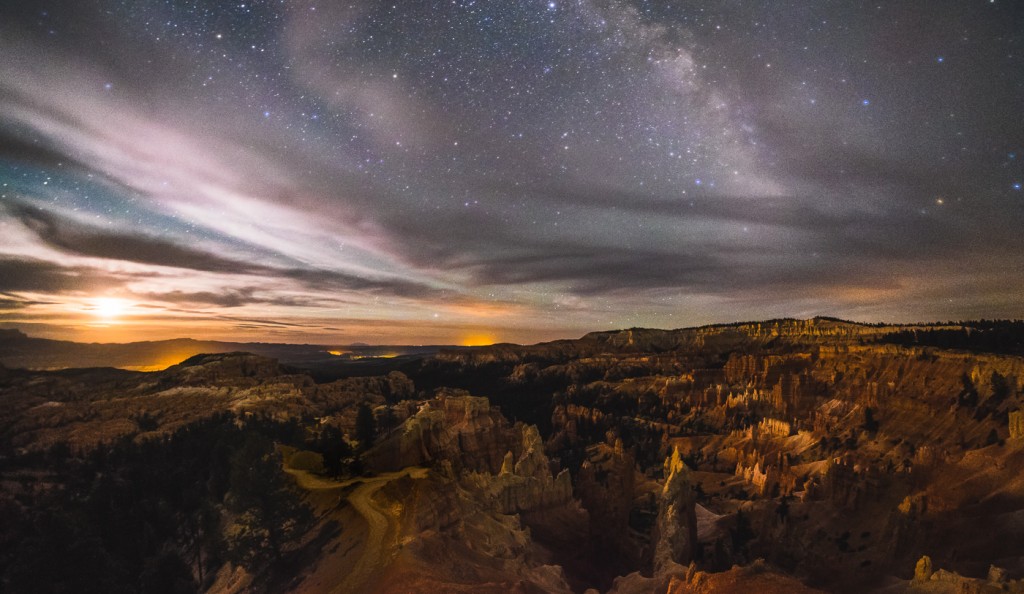
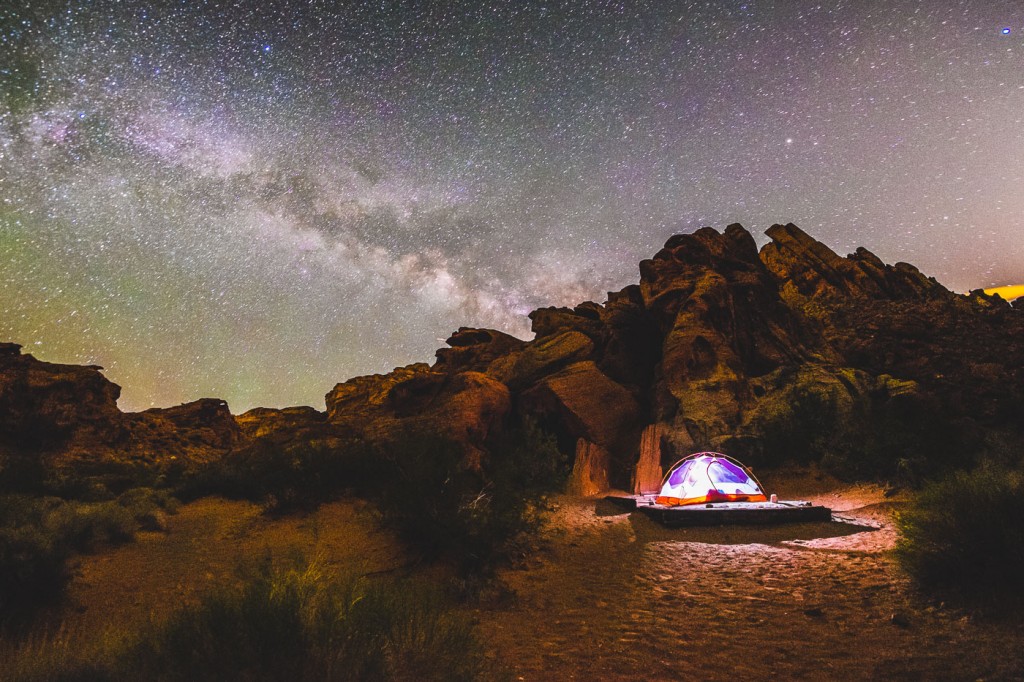
The Camera
I won’t go into too much detail about the ergonomics of the X-T1 or the general user experience. You can read about that stuff in my original review. What I would like to comment on is its use for shooting astrophotography.
I personally love the control layout of the X-T1. It is one of the best designed user experiences when it comes to shooting photos, and that makes it rather pleasant to use for astrophotography. I like all the physical dials: it’s not hard to find any particular control in the dark — everything is right where you expect it to be, and there’s never any question as to which dial adjusts which parameter. The tilt screen in particular is very appealing for using it low to the ground, which I find myself doing often when shooting at night.
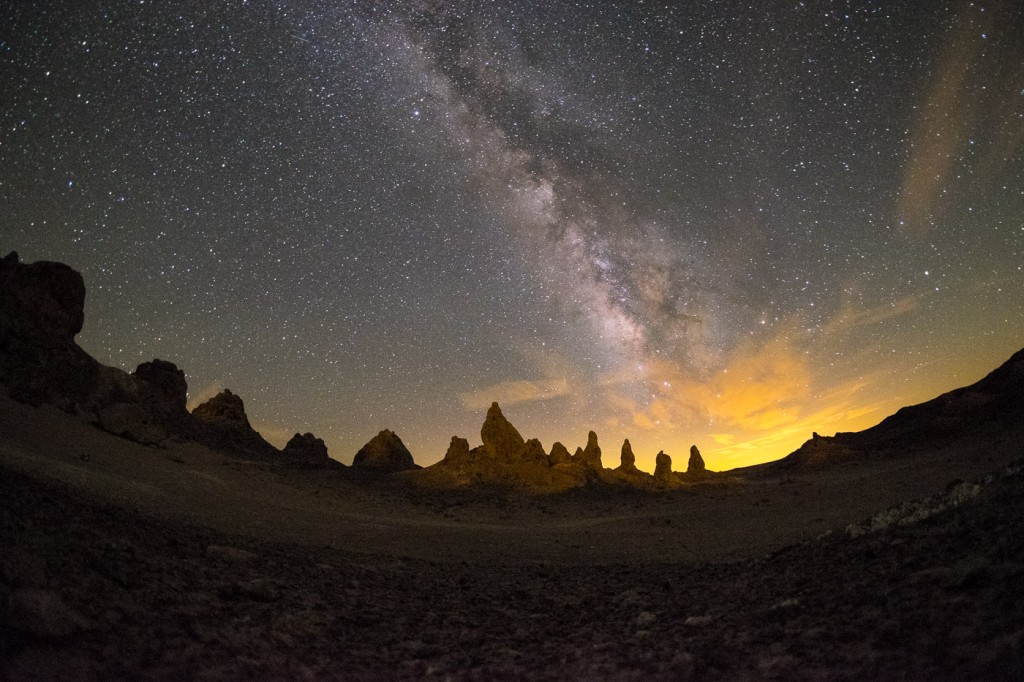
The LCD screen and live-view feed at night is alright. The camera is not sensitive enough to be able to use live-view to see much detail in the pitch black, but it’s adequate for finding some bright stars for the purpose of focusing. I did find that the amount of low-light detail that’s visible on the screen is also dependent on the brightness setting of the LCD. The brighter the setting, the easier it is to see faint details.
One of the better experiences with the Fujifilm system is that all of their lenses seem to be excellently calibrated to infinity. Just set the lens to the infinity mark (either on the lens barrel or via the electronic distance scale on the LCD) and the stars will be in perfect focus every time. Overall the X-T1 is an easy enough camera to use at night, but if you want the easiest camera for framing up a shot in the pitch black, the Sony a7S is definitely a better choice.
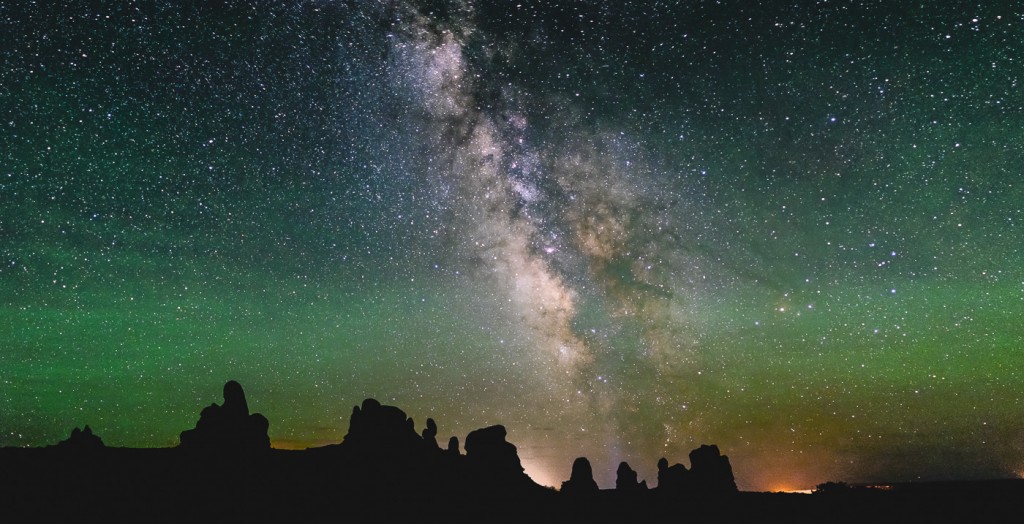
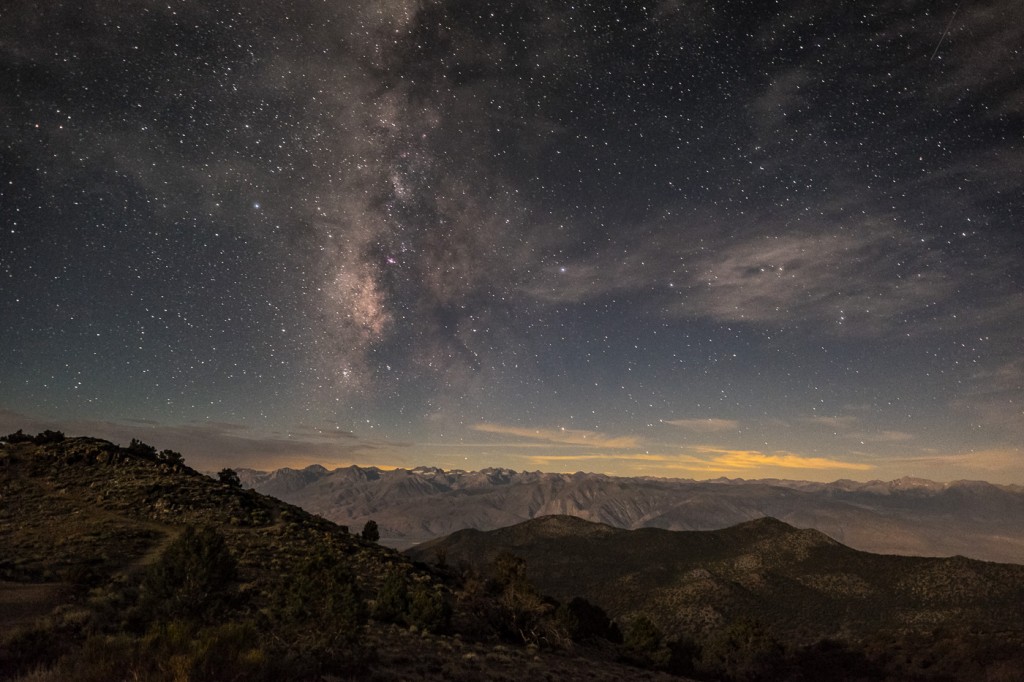
The Lens System
It doesn’t really matter how good a camera is at low-light shooting if it doesn’t have any good lenses available for it. The Fujifilm X-Series has only been around for a couple years now but it has a well-rounded selection of lenses and there are already a variety of third party lenses available for the Fujifilm X mount. For my summer road trip, I elected to use the 14mm/2.8, 23mm/1.4, 35mm/1.4 and a Rokinon/Samyang 8mm/2.8 Fisheye.
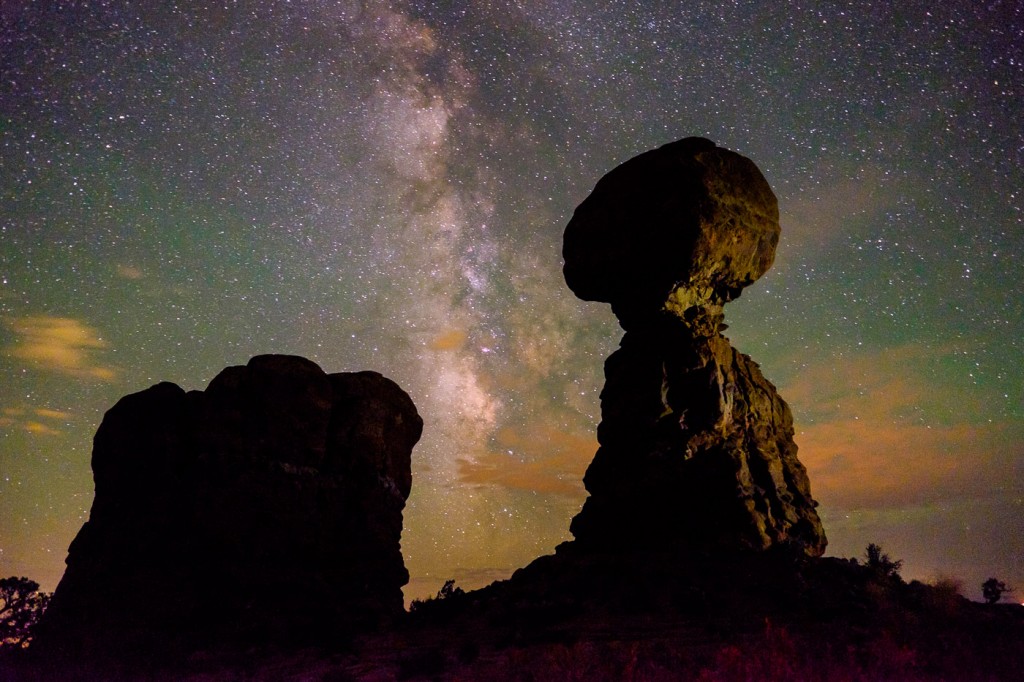
Fujifilm has a generally excellent, pro-oriented lens lineup for the X-T1. Most of their lenses are very good for most shooting in my experience, but not all of them are perfect for astrophotography. I’ve used a number of lenses that are available for the Fujifilm X Series and I’ve gathered my thoughts about using them for astrophotography on the X-T1. Here are some of the lenses available for the system, from 8mm to 56mm, that have aperture f/numbers of f/2.8 or lower:
- Rokinon 8mm f/2.8 II
- Excellent image quality if you get a good copy. Manual focus. Fast, ultra-wide FOV and easy to defish. Full review here.
- Rokinon 12mm f/2 NCS CS
- Spectacular lens for astrophotography. Manual focus. Almost no coma problems. Probably my favorite lens for landscape astrophotography on this list. Full review here.
- Zeiss Touit 12mm f/2.8
- Good optical performance but very difficult to manual focus. The focus-by-wire design changes focus point after entering/exiting playback mode on the camera.
- Fujifilm XF 14mm f/2.8 R
- Very good performance with an accurate distance and DOF scale.
- Rokinon 14mm f/2.8
- Larger DSLR design so it’s a bit too heavy on such a small camera. The Fujifilm version above is better and more compact albeit more expensive.
- Rokinon 16mm f/2.0
- Larger DSLR design so it’s also too heavy on the X-T1 but provides excellent performance at night.
- Fujifilm XF 16-55mm f/2.8 R LM WR
- Very practical focal range and good moderately fast optics. Extra points for weather sealing but certainly not necessary for night photography.
- Fujifilm XF 16mm f/1.4 R WR
- Just launched in April of 2015. Likely an excellent choice but I haven’t used one personally.
- Fujifilm XF 18-55mm f/2.8-4.0 R LM OIS
- Very practical focal range and just fast enough at 18mm for astrophotography.
- Fujifilm XF 18mm f/2 R
- Nice and fast with a moderately wide FOV. A little bit of coma at f/2 in the extreme corners but better by f/2.8. Generally very good.
- Fujifilm XF 23mm f/1.4 R
- A generally excellent lens but it suffers from astigmatism and coma at f/1.4. I recommend stopping down to f/2.0 for the best results.
- Rokinon 24mm f/1.4
- Not as sharp as the Fujifilm 23mm/1.4 but with less coma. I recommend stopping down to f/2.0 for the best results.
- Fujifilm XF 27mm f/2.8
- A little bit too narrow and slow for easy results but otherwise great for daytime shooting.
- Zeiss Touit 32mm f/1.8
- Bad coma at f/1.8 and also has the same manual focus shift issue as the Zeiss Touit 12mm f/2.8. I would probably avoid this lens for star shooting.
- Fujifilm XF 35mm f/1.4 R
- Bad coma at f/1.4. I would also generally avoid this lens for star shooting. I made some examples in this article with this lens but coma/astigmatism is apparent.
- Fujifilm XF 56mm f/1.2 R
- On the narrow end of the spectrum in terms of FOV so it’s best for stitching panoramas. Excellent coma performance by f/1.8
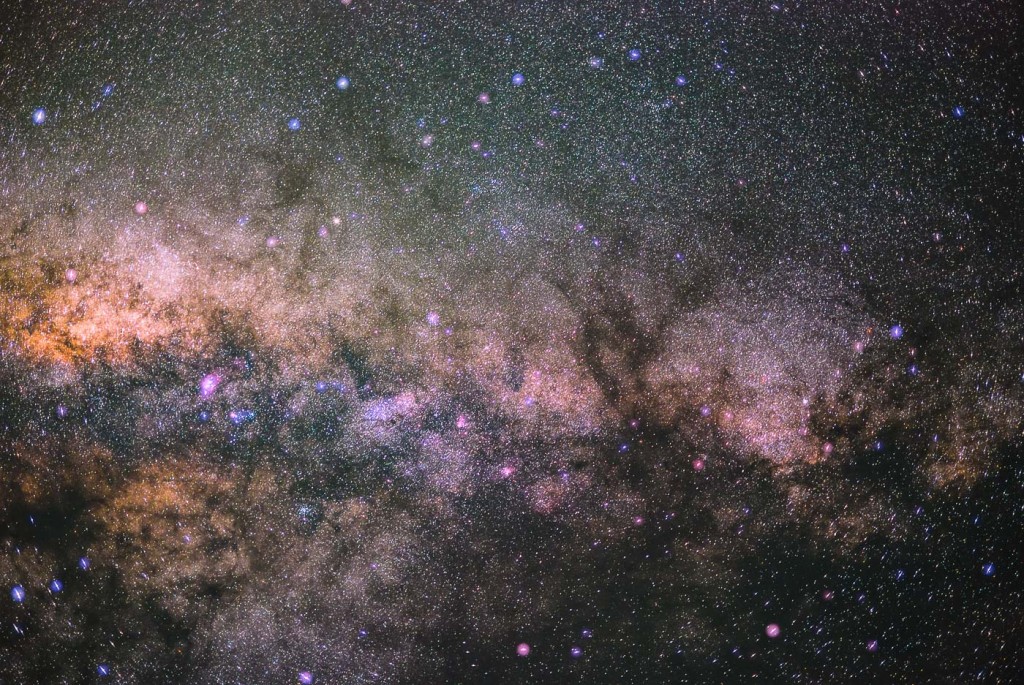
Until I get to review the new XF 16mm f/1.4 that was released in April of 2015, I still firmly think that the affordable Rokinon 12mm f/2 (Full Review) is the best lens for general landscape photography on an APS-C mirrorless camera like the Fujifilm X-T1. I’m a little bit disappointed in the current offerings in the “normal range” of 27mm to 35mm in terms of their night performance. Perhaps the recently announced Mitakon 35mm f/0.95 would be a viable option when stopped down a couple stops to f/2.
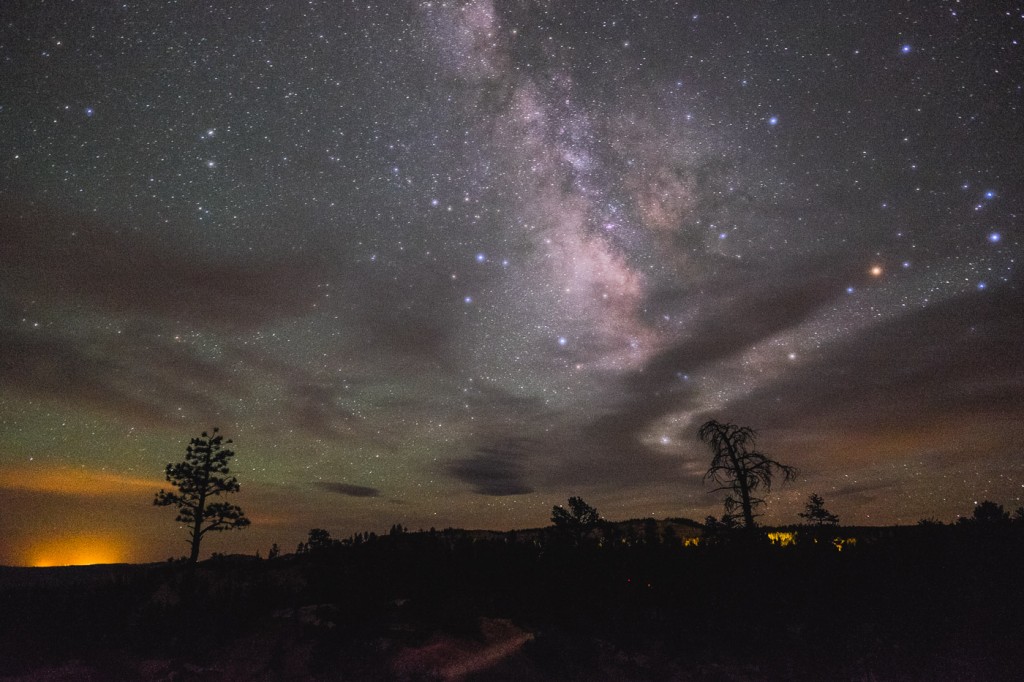
Low Light Performance
Let me start by saying that the X-T1 isn’t a Sony a7S. It’s not the best low-light camera out there. You’ll definitely be able to achieve cleaner images from a larger sensor camera like the Sony a7S, the Nikon D750, Canon EOS 6D or Sony a7. That said, the X-T1 is still rather good, particularly for a smaller APS-C sensor.
Fujifilm X-Series cameras use a unique sensor color filter array that does a great job at reducing color noise from images, so the RAW files from the X-T1 tend to look rather clean straight out of the camera, even at high ISO. Furthermore, the sensor is ISO-less so it’s reasonable to push the RAW files a great deal in post processing to bring out faint detail in underexposed parts of the image. That said, pushing the files of the X-T1 brings out a certain level of salt-and-pepper grain in heavily shadowed areas. It’s a rather organic looking grain, but it’s still present when shooting in dark conditions.
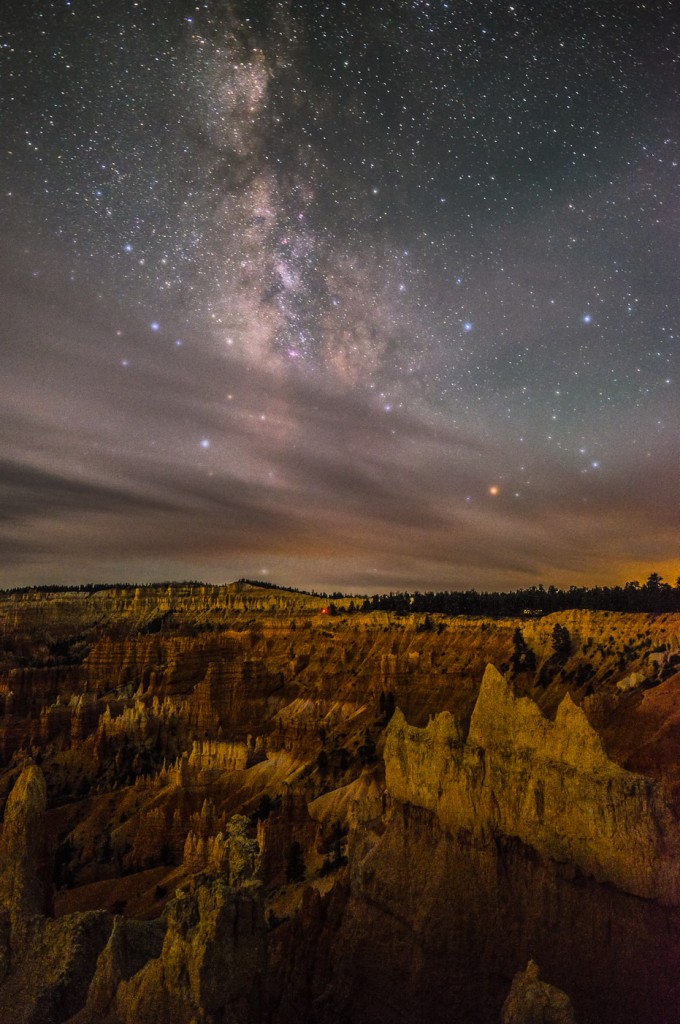
Shooting with a fast lens will help reduce noise a lot. (This suggestion applies to any camera.) The low-light performance is usually affected a lot more by whether or not you are using a fast lens than by the sensor of the camera. Luckily there are many fast lenses available for the X-T1 as we reviewed above.
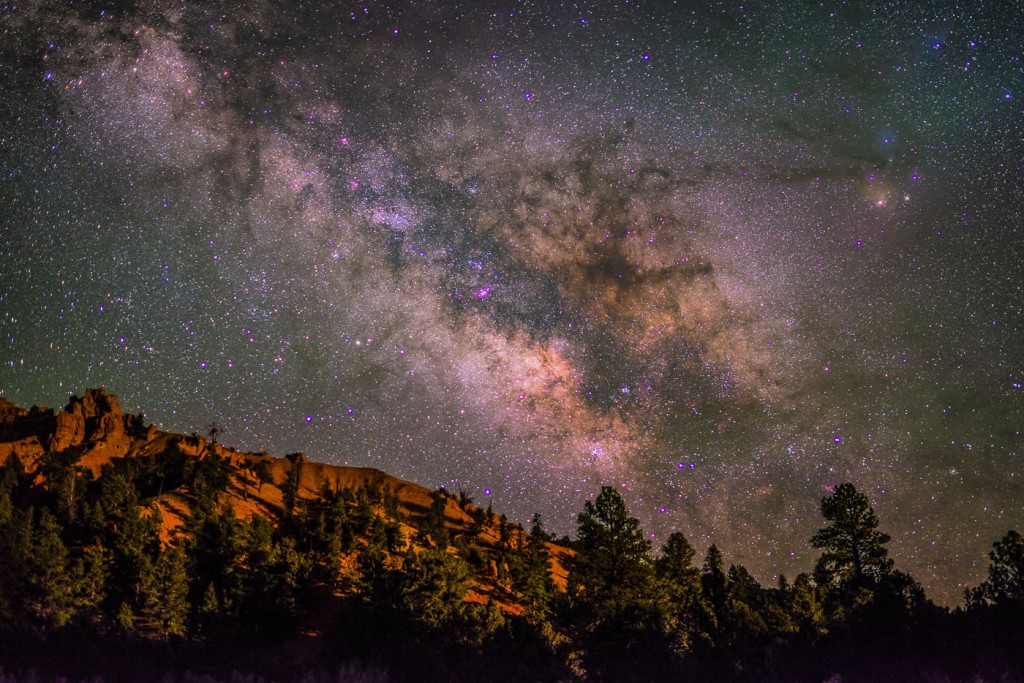
The X-T1 does a particularly good job at picking up faint color detail, and that seemed to produce some pleasing images with plenty of star color, pink nebulosity, green airglow and orange light pollution. Many of these photos were made on the only moderately fast Fujifilm XF 14mm f/2.8 or Rokinon 8mm f/2.8 rather than the much faster f/2 or f/1.4 lenses. But at f/2.8 the X-T1 was still able to capture a lot of detail in the shadows of the images. I’ll say that overall I’m very pleased by the performance of the camera. Noise levels are among the best for an APS-C camera and the quality of the grain in the images stays pleasing even when pushed in post processing.
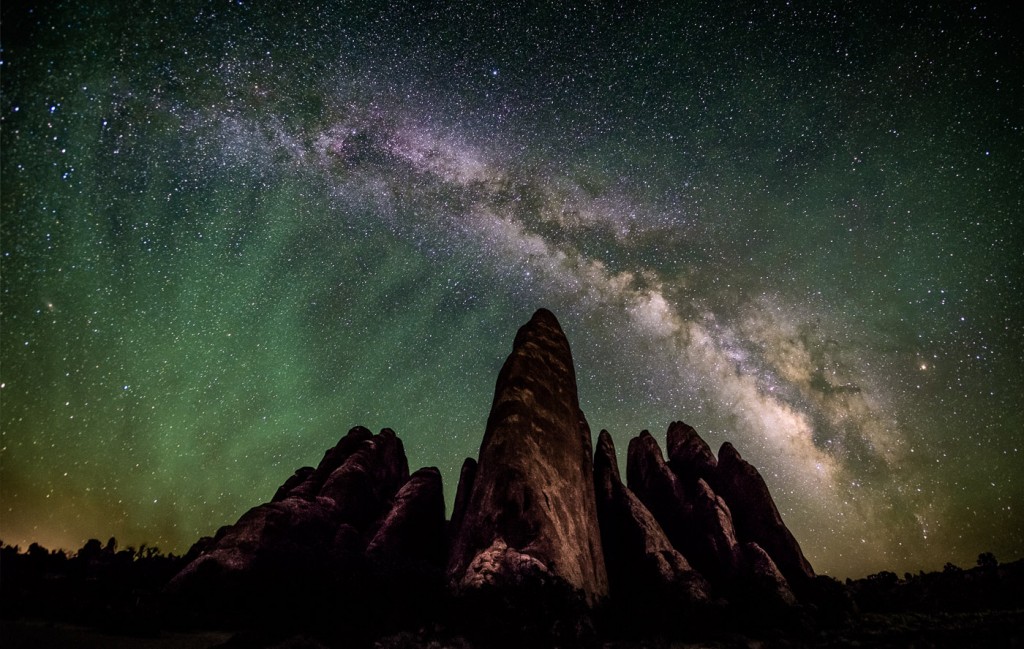
Final Thoughts
The Fujifilm X-T1 is not the best camera for astrophotography, but its performance is very good for an APS-C sensor camera. The real charm of the X-T1 is in its excellent user experience in terms of its control design and styling. I think that it can compete very closely with larger full-frame DSLRs out there, especially when paired with a fast lens. Luckily there are many compact and fast lens options available for the Fujifilm X Series.
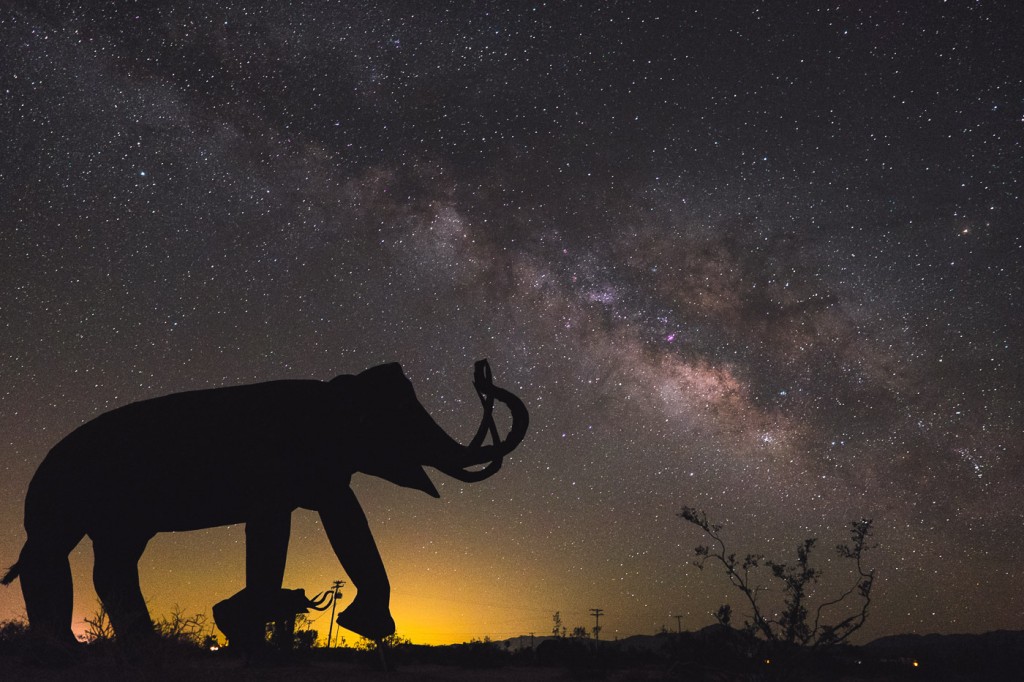
I think that beyond just considering its low-light performance, the Fujifilm X-T1 still remains my favorite interchangeable lens camera. There are better options out there for night photography (like the a7S of course) but the experience of shooting on the X-T1 in general is significantly more pleasant and the results at night can still be very good. If you’re considering the X-T1 as your next camera and want to use it for astrophotography, it will certainly promise to deliver great photos.
If you’re looking for the best of the best performance at night, the X-T1 honestly isn’t quite there. A full frame camera is certainly going to provide an advantage and as of this writing, the Sony a7S is still the best low-light performer I know of. I hope my photos have given you an idea of what’s possible on the X-T1. It’s a joy of a camera to use and I’m certainly happy to have had it as my tool on my cross country road trip.
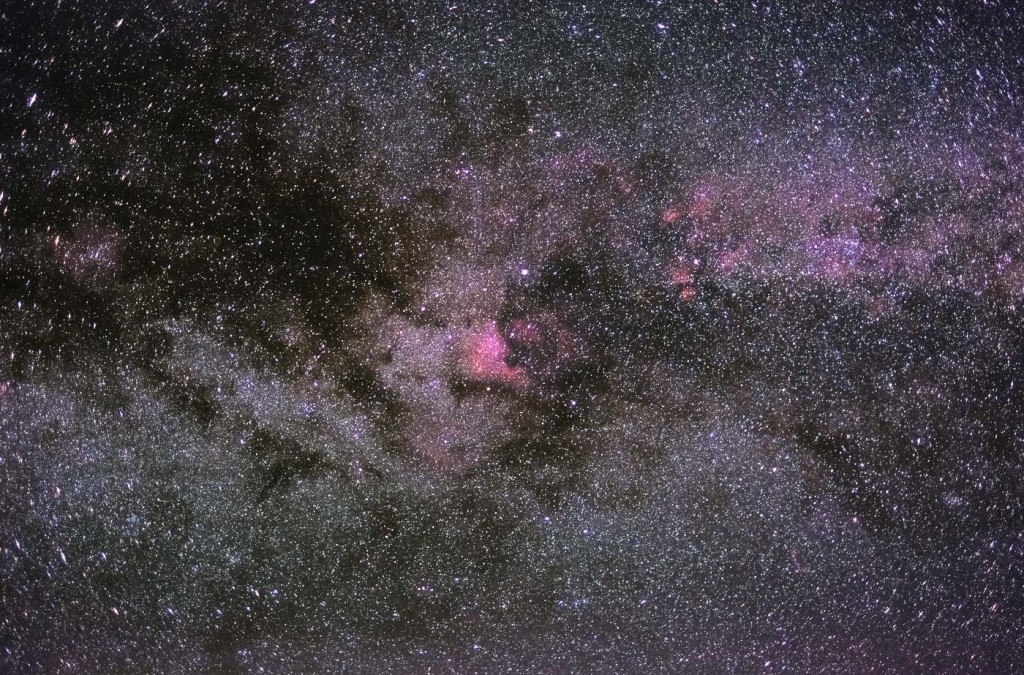
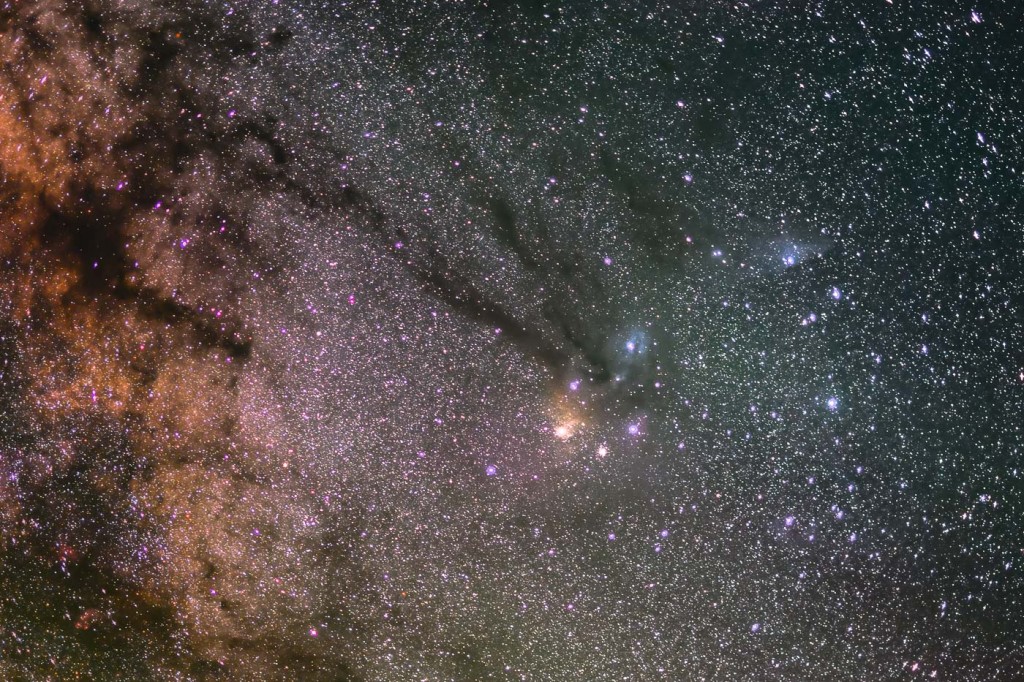
Verdict:
RECOMMENDED
Links:
Disclosure
We are a participant in the Amazon Services LLC Associates Program, an affiliate advertising program designed to provide a means for us to earn fees by linking to Amazon.com and affiliated sites. We are also a participant in the B&H Affiliate Program which also allows us to earn fees by linking to bhphotovideo.com.
Learn Astrophotography
Astrophotography 101 is completely free for everyone. All of the lessons are available on the Lonely Speck Astrophotography 101 page for you to access at any time. Enter your email and whenever we post a new lesson you’ll receive it in your inbox. We won’t spam you and your email will stay secure. Furthermore, updates will be sent out only periodically, usually less than once per week.
Help us help you!
Believe it or not, Lonely Speck is my full-time job. It’s been an amazing experience for us to see a community develop around learning astrophotography and we’re so happy to be a small part of it. I have learned that amazing things happen when you ask for help so remember that we are always here for you. If you have any questions about photography or just want to share a story, contact us! If you find the articles here helpful, consider helping us out with a donation.
[button font_size=”16″ color=”#136e9f” text_color=”#ffffff” url=”https://www.paypal.com/cgi-bin/webscr?cmd=_donations&business=lonelyspeckblog%40gmail.com&item_name=These+tips+help+keep+lonelyspeck.com+running.¤cy_code=USD&source=url” target=”_blank”]Donate[/button]
Thanks so much for being a part of our astrophotography adventure.
-Ian
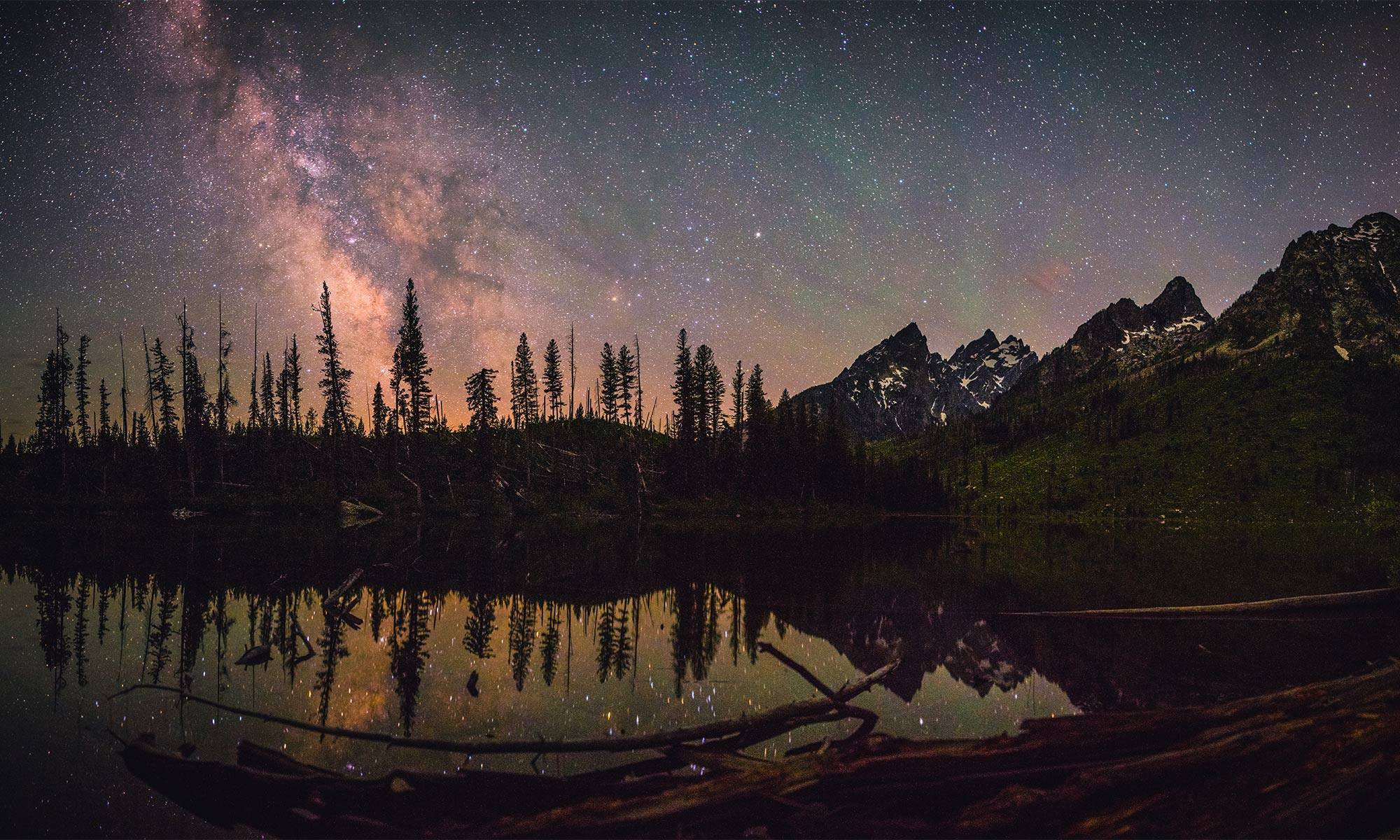
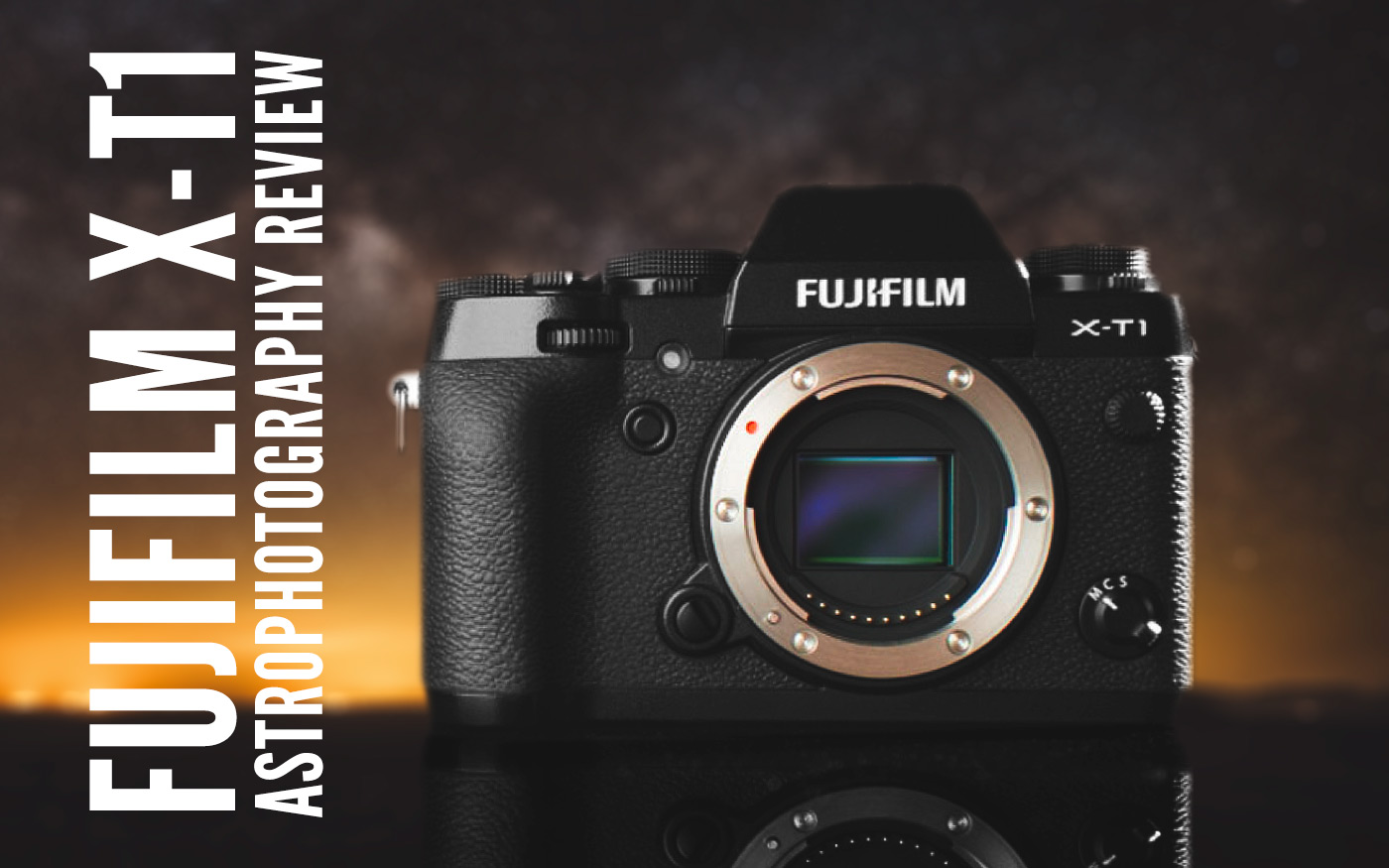
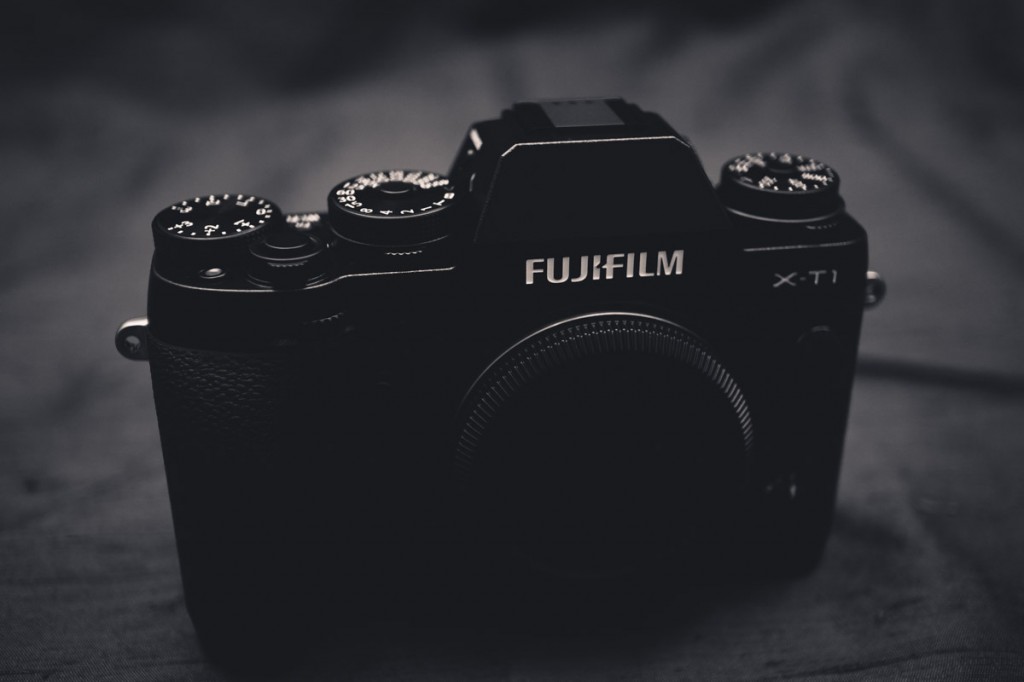
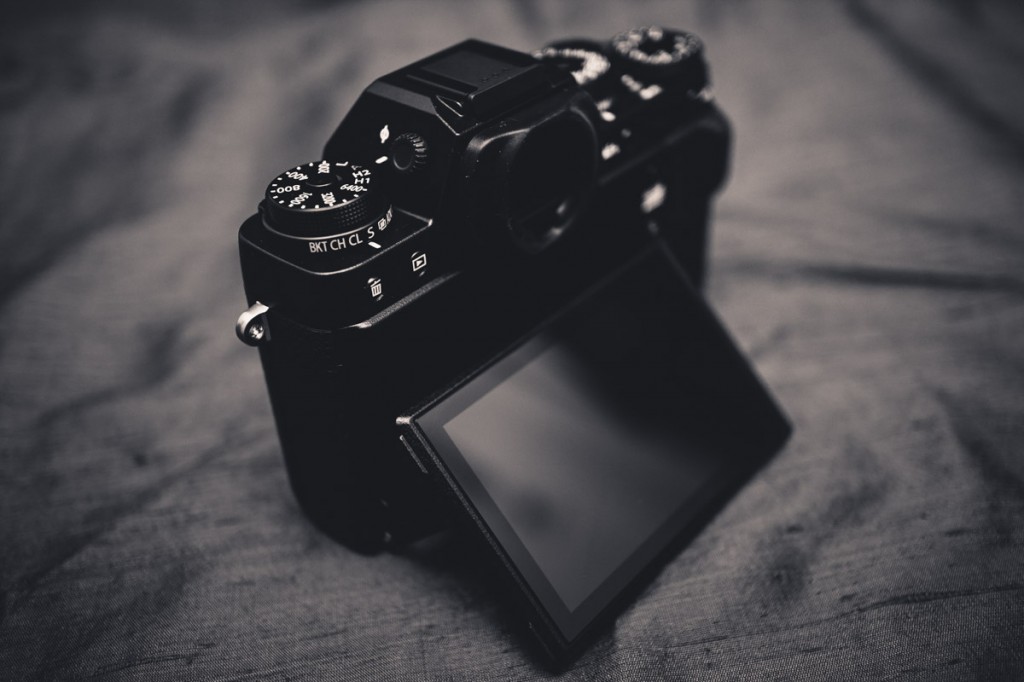
Please review the X-T3 and the new 16mm f2.8
Just bought an xt10 and are going to a dark skies site,which settings and color simulattion you used with the xt1,mainly H TONE S TONE and sharpness ,or all to 0? thanks in advance.
This is THE best review for Fujifilm Astro (Milky way) photography online. I wish you had it updated with ALL the lenses. Specifically the 23mm/f2, 35mm/f2, and the 50mm/f2, as I’m trying to get a weather resistant setup and don’t mind stitching together panoramas (otherwise I’d get the 16mm). Please keep this updated and ask the community if you need anything, I for one would be happy to lend you lenses you don’t have for reviews.
I really enjoyed your review and it helped me decide to purchase the Fujifilm XT-2. I was curious if you had any plans to review the XT-2 in particular for astrophotography? I’ve had great success shooting the milky way with it, but would love your take. Also I am anxious for your review of the Fuji GFX 50s!
I second Mason’s encouragement for a Fuji GFX review for astrophotography.
23mm f4? Or a non-native faster lens? Have you tried it? Would be interested in your take.